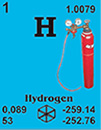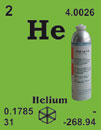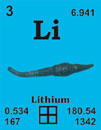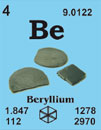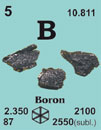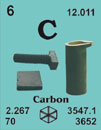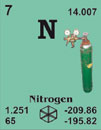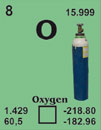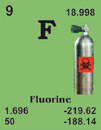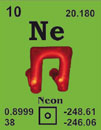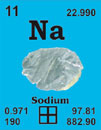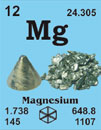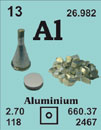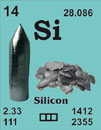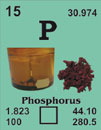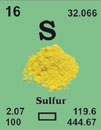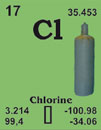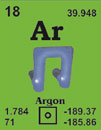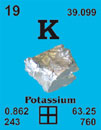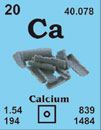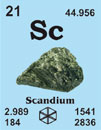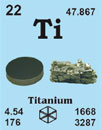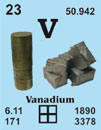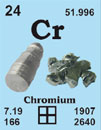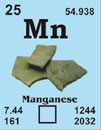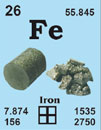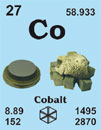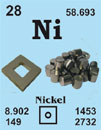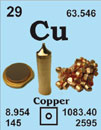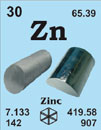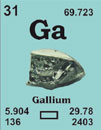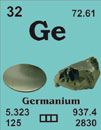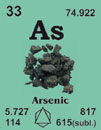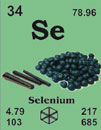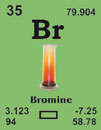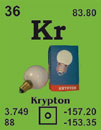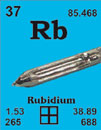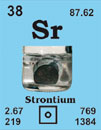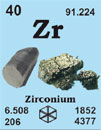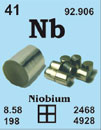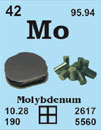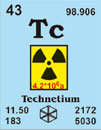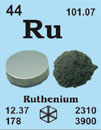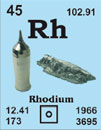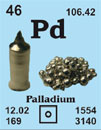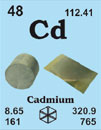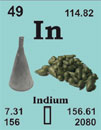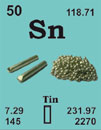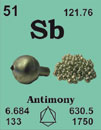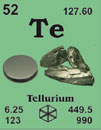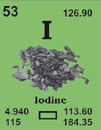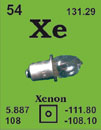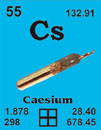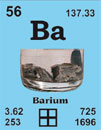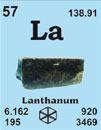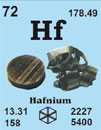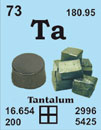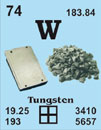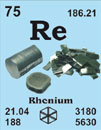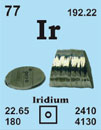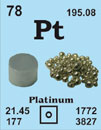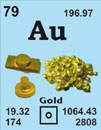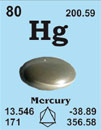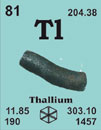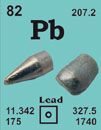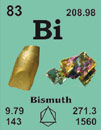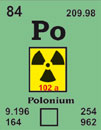Platinum 78Pt195.09
Known to pre-Columbian South Americans and taken to Europe about 1750.
[Spanish, platina = silver]
French: platine
German: Platin
Italian: platino
Spanish: platino
Description: Platinum is a lustrous, silvery-white, malleable and ductile metal. It is unaffected by air and water, and will only dissolve in aqua regia (HCl/HNO3) and molten alkalis. Platinum is used in jewellery, anti-cancer drugs, catalysts an catalytic convertors.
Platinum single crystal properties
| State: |
single crystal |
|---|
| Crystal structure: |
fcc |
|---|
| Production method: |
Czochralski |
|---|
| Standard size: |
diameter 10-12mm
thickness 1-2mm |
|---|
| Orientation: |
(100), (110) and (111) |
|---|
| Orientation accuracy: |
<2°, <1°, <0.4° or <0.1° |
|---|
| Polishing: |
as cut, one or two sides polished |
|---|
| Roughness of surface: |
<0.03µm |
|---|
| Purity: |
99.99% |
|---|
| Typical analysis (ppm): |
C 3
H < 1
O 9
N < 5
Cu 1.60
Fe 1.80
Ni < 1
Pb 0.30
Si 0.30
Ga, Hf and Ta are below the detection limit
|
|---|
Materials properties
| Density: |
21.4 g/cm3 |
|---|
| Melting point: |
1771.85 °C / 2045 °K |
|---|
| Boiling point: |
3826.85 ±100 °C / 4100±100 °K |
|---|
| Molar volume: |
9.10 cm3 |
|---|
| Thermal conductivity: |
71.6 [300 K] Wm-1K-1 |
|---|
| Coefficient of linear thermal expansion: |
9.0 x 10-6 K-1 |
|---|
| Electrical resistivity: |
10.6x 10-8 [293 K] Wm |
|---|
| Mass magnetic susceptibility: |
+1.301 x 10-8(s) kg-1m3 |
|---|
| Young's modulus: |
170 GPa |
|---|
| Rigidity modulus: |
60.9 GPa |
|---|
| Bulk modulus: |
276 GPa |
|---|
| Poisson's ratio: |
0.39 |
|---|
| Radii: |
Pt4+ 70; Pt2+ 85; atomic 138; covalent 129 |
|---|
| Electronegativity: |
2.28 (Pauling); 1.44 (Allred); 5.6 eV (absolute) |
|---|
| Effective nuclear charge: |
4.05 (Slater); 10.75 (Clementi); 15.65 (Froese-Fischer) |
|---|
| Number of Isotopes (incl. nuclear isomers): |
36 |
|---|
| Issotope mass range: |
172 -> 201 |
|---|
| Crystal structure, (cell dimentions / pm), space group |
fcc |
|---|
| X-ray diffraction: mass absorption coefficients: |
CuKα 200 (µ/r) / cm2g-1
MoKα 113 (µ/r) / cm2g-1 |
|---|
| Neutron scattering length: |
0.960 b/10-12 cm |
|---|
| Thermal neutron capture cross-section: |
10.3 sa / barns |
|---|
Biological data
| Biological role: |
none |
|---|
| Toxicity |
|
|---|
| Toxic intake: |
regarded as non-toxic |
|---|
| Lethal intake: |
LD50 (PtCl2, oral, rat)= 17.5 mg kg-1 |
|---|
| Hazards: |
Platinum implants are generally tolerated by the body. Platinum salts are poisonous. |
|---|
| Level in humans |
|
|---|
| Blood: |
|
|---|
| Bone: |
|
|---|
| Liver: |
|
|---|
| Muscle: |
|
|---|
| Daily dietary intake: |
n.a. |
|---|
| Total mass of element in average [70 kg] person: |
n.a |
|---|
Geological data
| Mineral | Formula | Density | Hardness | Crystal apperance |
|---|
| Platiniridium |
(Ir, Pt) |
22.7 |
6 - 7 |
cub., met. white |
|---|
| platinum |
Pt |
c. 21 |
4 - 4.5 |
cub., metallic white/grey |
|---|
| Chief ore: |
platinum ore; some platinum is extracted as a by-product of copper and nickel refining. |
|---|
| World production: |
30 tonnes/year |
|---|
| Main mining areas: |
native platinum occurs naturally, mostly as nuggets, in the rivers of the Urals in Russia and in deposits in Canada, South Africa, Columbia and Peru. |
|---|
| Reserves: |
n.a. |
|---|
| Specimen: |
available as foil, gauze, sponge, powder or wire. Safe. |
|---|
| Abundances |
|
|---|
| Sun: |
56.2 (relative to H = 1 x 1012) |
|---|
| Earth's crust: |
c. 0.001 p.p.m. |
|---|
| Seawater: |
|
|---|
| Residence time: |
|
|---|
| Classification: |
|
|---|
| Oxidation state: |
II |
|---|
Source: Emsley, J. (1998) The Elements (3rd Edition)

 English
English
 Deutsch
Deutsch
